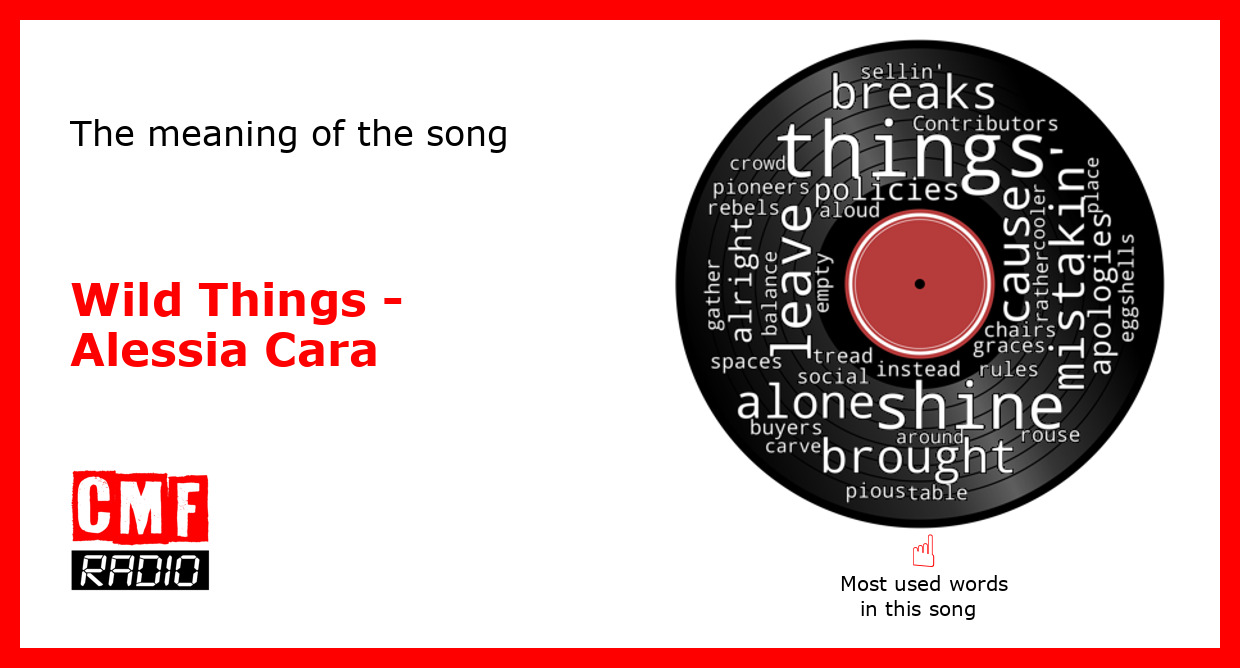Have you ever wondered about the truth behind the song "Where the Wild Things Are"? This iconic piece has captured the hearts of millions worldwide, becoming a cultural phenomenon that transcends generations. Its powerful lyrics and emotive melodies have sparked countless debates about its authenticity and meaning. In this article, we will delve deep into the origins, significance, and truth behind this legendary song, exploring whether it is fact or fiction.
The song "Where the Wild Things Are" draws its inspiration from the beloved children's book by Maurice Sendak, published in 1963. The book's imaginative world of wild creatures and adventure has inspired countless adaptations, including a feature film and, of course, this famous song. As we explore its history, we will uncover the layers of meaning embedded within its lyrics and melodies, helping us understand why it resonates so deeply with audiences.
This article aims to provide a comprehensive analysis of the song's origins, its cultural impact, and whether it holds any truth. By the end of this piece, you will have a clearer understanding of the song's significance and its place in popular culture. Let's dive in and uncover the mysteries behind "Where the Wild Things Are."
Read also:Is Jensen Ackles Still Married A Comprehensive Look Into His Personal Life
Table of Contents:
- Biography of Maurice Sendak
- The Origin of the Song
- Understanding the Lyrics
- Cultural Impact
- Musical Adaptations
- Is the Song True?
- Criticisms and Controversies
- Educational Value
- Audience Reaction
- Conclusion
Biography of Maurice Sendak
Early Life and Career
Maurice Sendak, the creator of "Where the Wild Things Are," was born on June 10, 1928, in Brooklyn, New York. His early life was shaped by the stories and traditions of his Polish immigrant parents, which influenced his artistic style. Sendak's career as an illustrator began in the 1940s, and he quickly gained recognition for his unique approach to children's literature.
| Born | June 10, 1928, Brooklyn, New York |
|---|---|
| Died | May 8, 2012, Norwalk, Connecticut |
| Occupation | Illustrator, Writer |
| Known For | "Where the Wild Things Are," "In the Night Kitchen" |
Influence on Literature
Sendak's work revolutionized children's literature by addressing complex themes such as fear, anger, and imagination. His illustrations and stories challenged traditional norms, making him a pioneer in the field. "Where the Wild Things Are" remains his most celebrated work, inspiring generations of readers and creators alike.
The Origin of the Song
The song "Where the Wild Things Are" was inspired by Maurice Sendak's book and later adapted for the 2009 film directed by Spike Jonze. Composer Karen O of the band Yeah Yeah Yeahs wrote the song, capturing the essence of Sendak's imaginative world. The collaboration between Jonze and Karen O brought the story to life in a new medium, enhancing its emotional depth.
Collaboration with Spike Jonze
Spike Jonze, known for his innovative filmmaking style, worked closely with Karen O to create a soundtrack that complemented the film's narrative. Their partnership resulted in a soundtrack that resonated with audiences, elevating the story's impact. The song became a defining element of the film, capturing the spirit of adventure and self-discovery.
Understanding the Lyrics
The lyrics of "Where the Wild Things Are" explore themes of childhood imagination, rebellion, and the journey of self-discovery. Through vivid imagery and emotive language, the song invites listeners to embark on a journey to the land of wild things, where they can confront their fears and embrace their true selves.
Read also:Harry Connick Jr Family Pictures A Closer Look At His Life Love And Legacy
- Imagination: The song emphasizes the power of imagination, encouraging listeners to create their own worlds and explore the unknown.
- Rebellion: It captures the spirit of rebellion, highlighting the importance of standing up for oneself and challenging societal norms.
- Self-Discovery: The lyrics invite listeners to embark on a journey of self-discovery, learning to accept and embrace their true nature.
Cultural Impact
"Where the Wild Things Are" has had a profound impact on popular culture, influencing countless artists, filmmakers, and writers. Its themes of imagination and self-discovery resonate with audiences of all ages, making it a timeless classic. The song and its accompanying film have inspired numerous adaptations, tributes, and reinterpretations, solidifying their place in cultural history.
Legacy in Film and Music
The film adaptation of "Where the Wild Things Are" received critical acclaim for its innovative storytelling and stunning visuals. Karen O's song became a cultural touchstone, inspiring countless covers and reinterpretations. Its influence can be seen in various forms of media, from music videos to stage productions, showcasing its enduring appeal.
Musical Adaptations
Since its release, "Where the Wild Things Are" has been adapted into various musical formats, including covers, remixes, and tribute performances. These adaptations have introduced the song to new audiences, expanding its reach and impact. Some notable adaptations include:
- Covers by indie artists
- Remixes by electronic musicians
- Tribute performances by orchestras and choirs
Is the Song True?
The question of whether the song "Where the Wild Things Are" is true depends on how one interprets its themes and messages. While the story itself is fictional, its exploration of universal human experiences—such as imagination, rebellion, and self-discovery—resonates deeply with audiences. In this sense, the song can be seen as a reflection of truth, capturing the essence of what it means to be human.
Symbolism and Metaphor
The song employs rich symbolism and metaphor to convey its messages, inviting listeners to interpret its meaning in their own way. The wild things, for example, can represent inner fears and desires, while the journey to their land symbolizes the process of self-discovery. By engaging with these themes, listeners can find personal truths within the song's narrative.
Criticisms and Controversies
Despite its widespread popularity, "Where the Wild Things Are" has faced criticism and controversy over the years. Some critics argue that its themes of rebellion and imagination may encourage disruptive behavior in children. Others question the film's adaptation of Sendak's original work, suggesting that it deviates too far from the source material.
Addressing Criticisms
Proponents of the song and film argue that these criticisms overlook the deeper messages embedded within the story. By addressing complex themes such as fear, anger, and self-discovery, "Where the Wild Things Are" provides a valuable learning experience for children and adults alike. Its ability to spark meaningful discussions and reflections is a testament to its enduring relevance.
Educational Value
"Where the Wild Things Are" offers significant educational value, teaching important lessons about imagination, self-expression, and emotional intelligence. Its themes encourage children to embrace their creativity and explore their inner worlds, fostering personal growth and development. Educators and parents alike have embraced the story as a tool for teaching valuable life skills.
Lessons for Children
Some key lessons that children can learn from "Where the Wild Things Are" include:
- The importance of imagination in problem-solving
- The value of self-expression and creativity
- Emotional intelligence and managing difficult emotions
Audience Reaction
The audience reaction to "Where the Wild Things Are" has been overwhelmingly positive, with fans praising its imaginative storytelling and emotional depth. The song and film have resonated with audiences worldwide, sparking discussions and inspiring countless adaptations. Its ability to connect with people of all ages and backgrounds speaks to its universal appeal.
Global Impact
From film festivals to music charts, "Where the Wild Things Are" has left an indelible mark on the global stage. Its influence extends beyond entertainment, inspiring social movements and educational initiatives aimed at fostering creativity and self-expression. The song's enduring popularity is a testament to its ability to transcend cultural and generational boundaries.
Conclusion
In conclusion, the song "Where the Wild Things Are" is a powerful exploration of imagination, rebellion, and self-discovery. While its origins lie in Maurice Sendak's beloved book, its adaptation into music and film has expanded its reach and impact. Whether the song is "true" depends on how one interprets its themes and messages, but its ability to resonate with audiences worldwide is undeniable.
We invite you to share your thoughts and reactions in the comments below. What does "Where the Wild Things Are" mean to you? How has it impacted your life or inspired your creativity? By engaging with this timeless classic, we can continue to uncover its truths and meanings, ensuring its legacy endures for generations to come.


